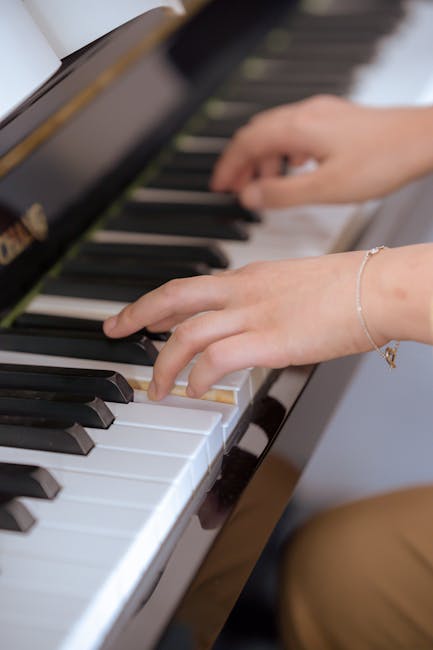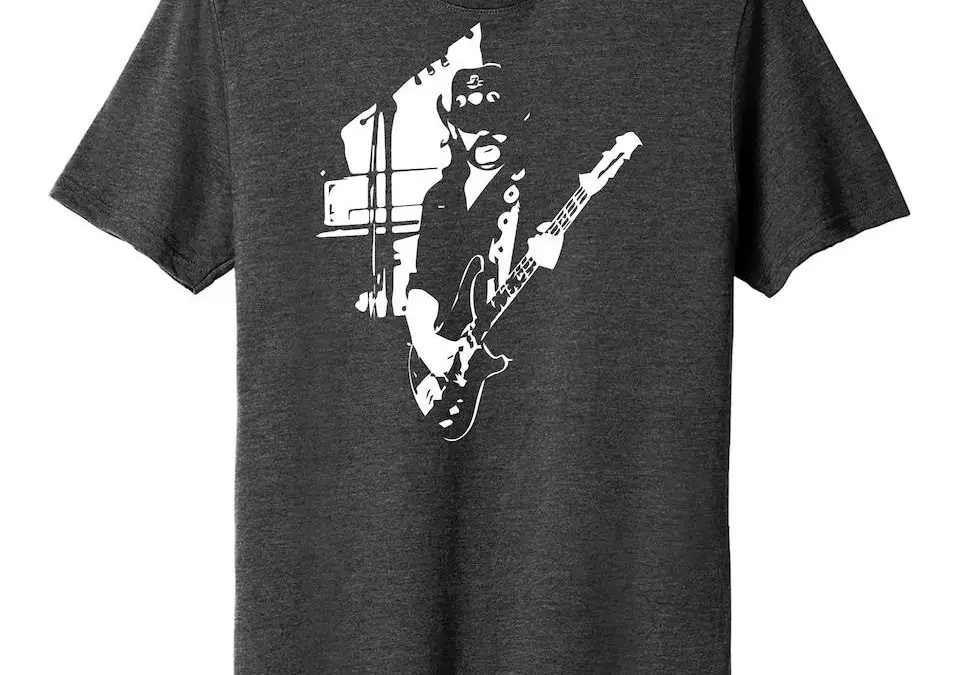Are you tired of feeling like a musical detective trying to crack the code of key signatures on guitar? Picture this: you’re strumming along, thinking you’ve got a catchy tune down pat, when suddenly you hit a sour note that throws off the entire jam session. Cue the confusion, frustration, and maybe even a few tears (we don’t judge). But fear not, fellow guitar enthusiasts, because we’re here to demystify the enigma that is key signatures on guitar. Say goodbye to musical mayhem and hello to smooth sailing through the sea of sharps and flats. Get ready to unlock the secrets of key signatures and conquer the fretboard once and for all. Let’s dive in, shall we
Contents
- 1 Understanding the Fundamentals of Key Signatures in Guitar Music
- 2 Exploring the Circle of Fifths and its Significance for Guitarists
- 3 The Role of Sharps and Flats in Defining Key Signatures
- 4 Techniques for Mastering Key Changes on the Guitar
- 5 Navigating through Common Key Signatures in Popular Guitar Repertoire
- 6
- 7 Advanced Tips for Transposing Songs to Different Key Signatures on Guitar
- 8 FAQs
- 9 In Conclusion: Roaming the Musical Landscape with Confidence
Understanding the Fundamentals of Key Signatures in Guitar Music
So you’ve picked up the guitar and you’re ready to rock out, but those pesky key signatures are throwing you for a loop. Fear not, dear guitarist, for we are here to guide you through the confusing world of key signatures!
First things first, let’s talk about what a key signature actually is. Essentially, a key signature tells you which notes to play in a song. It’s like a secret code that unlocks the musical treasure chest, except instead of gold doubloons, you get killer tunes.
- Each key signature is associated with a specific key, which is like a home base for the song.
- There are 12 possible key signatures, one for each key in Western music.
Now, you may be wondering how to decipher these mysterious key signatures. Well, it’s actually not as hard as it seems! All you need to do is pay close attention to the sharps or flats listed at the beginning of the staff. These symbols indicate which notes are altered in the song.
So next time you see a key signature in your guitar music, don’t panic. Just remember to keep calm, rock on, and let the key signature be your trusty guide through the musical jungle!

Exploring the Circle of Fifths and its Significance for Guitarists
So, you’ve heard talk of this mystical thing called the Circle of Fifths, and you’re wondering what all the fuss is about. Well, strap in, fellow guitarists, because we’re about to dive deep into this magical musical concept that will elevate your playing to new heights!
First off, let’s break it down simply: the Circle of Fifths is a handy tool that shows the relationship between different musical keys. It’s like a GPS for navigating the vast world of musical keys and scales, helping you understand how they connect and flow together. Sounds pretty nifty, right?
Now, why should us guitarists care about the Circle of Fifths? Well, for starters, it can help us figure out which chords and scales work well together, creating harmonious and pleasing musical arrangements. Plus, it can assist us in transposing songs into different keys, opening up a whole new world of possibilities for our repertoire. Not too shabby, huh?
So, next time you’re jamming away on your trusty guitar, take a moment to consult the Circle of Fifths. It might just be the secret weapon you need to unleash your full musical potential. Who knows, with a little help from this magical circle, you might just become the guitar hero you’ve always dreamed of!

The Role of Sharps and Flats in Defining Key Signatures
Sharp and flat notes are like the spicy and sour flavors in a musical dish – they add complexity and character to the overall taste of a song. In music theory, they play a crucial role in defining key signatures, which essentially sets the tonal center for a piece of music. So, let’s dive into the fascinating world of sharps and flats!
First off, let’s talk about sharps. When a note is sharpened, it’s like giving it a little musical caffeine boost – it gets a half-step higher in pitch. These sharp notes are like the overachievers of the musical scale, always pushing the boundaries and adding a touch of excitement to the key signature. They make sure that you’re awake and paying attention while jamming out to your favorite tune.
Now, onto flats. Flats are like the chilled-out surfer dudes of the musical world – they bring a laid-back vibe to the key signature by lowering a note by a half-step. They’re all about keeping things cool and relaxed, creating a smooth and mellow sound that’s perfect for grooving along to on a lazy Sunday afternoon.
So, whether you’re all about the spicy sharp notes or prefer the chill vibes of the flats, it’s clear that sharps and flats play a vital role in defining key signatures and shaping the overall feel of a piece of music. Embrace the quirks and nuances of these accidentals, and let them guide you through the melodic journey of your musical creations!

Techniques for Mastering Key Changes on the Guitar
So you want to be a rockstar guitar player, huh? Well, mastering key changes is key to impressing your adoring fans. Here are some techniques to help you conquer those pesky shifts:
First off, make sure you know your scales like the back of your hand. Practice playing scales in different keys until your fingers bleed (just kidding, please don’t hurt yourself). Knowing your scales will make it easier to navigate those pesky key changes.
Another handy trick is to use a capo. Slap that bad boy on your guitar neck and suddenly you’re playing like a pro in a new key without having to do any mental gymnastics. It’s like cheating, but totally legal!
And finally, don’t be afraid to experiment with different chord voicings. Sometimes a simple change in fingering can make all the difference in nailing a key change. Get creative and see what sounds good to your ears. Remember, there are no wrong answers in rock ‘n’ roll!

So, you want to become a guitar legend, but you keep getting lost in the sea of key signatures? Well, fear not, my fellow guitarist! Let me guide you through the treacherous waters of popular guitar repertoire and help you navigate through some of the most common key signatures without losing your sanity.
First things first, let’s talk about the key of G major. This key is like a warm, sunny day at the beach – it’s bright, cheerful, and perfect for strumming along to your favorite pop tunes. Some popular songs in G major include “Sweet Home Alabama” by Lynyrd Skynyrd and “Ring of Fire” by Johnny Cash.
Next up, we have the key of D major. Think of D major as the cool, laid-back cousin of G major. It’s a bit more mellow and relaxed, making it ideal for those smooth, groovy riffs. Songs like “Brown Eyed Girl” by Van Morrison and “Hotel California” by The Eagles are often played in D major.
Now, let’s take a trip to the jazzy side of things with the key of Bb major. Bb major is like sipping on a fancy cocktail at a swanky lounge – it’s sophisticated, classy, and oh-so-cool. Explore songs like “Georgia on My Mind” by Ray Charles and “Sittin’ On the Dock of the Bay” by Otis Redding to get your Bb major fix.
improvisation-and-composition-on-guitar”>Applying Key Signature Knowledge to Improvisation and Composition on Guitar
So, you’ve finally mastered those pesky key signatures on your guitar and you’re feeling like a musical genius. But don’t get too cocky just yet! It’s time to put that knowledge to the test and see if you can truly wield the power of key signatures in your improvisation and composition.
One great way to start applying your key signature knowledge is by using it to create catchy melodies and solos. When you know which notes are in a particular key, you can confidently navigate the fretboard and come up with some killer licks that will impress even the most seasoned musicians. So, don’t be afraid to experiment and see where your newfound knowledge takes you!
Another fun way to incorporate key signatures into your playing is by using them to spice up your chord progressions. By knowing which chords work best in a given key, you can create more cohesive and interesting harmonies that will take your compositions to the next level. Plus, it’s a great way to show off your fancy key signature skills to all your fellow guitarists.
And remember, don’t be afraid to think outside the box and break some rules. Music is all about expressing yourself, so feel free to experiment and push the boundaries of what you know about key signatures. Who knows, you might just stumble upon a unique sound that sets you apart from the rest!
Advanced Tips for Transposing Songs to Different Key Signatures on Guitar
So you’ve mastered the basics of transposing songs to different key signatures on guitar, but now you’re ready to take it to the next level. Here are some advanced tips to help you navigate the tricky waters of key changes:
- Get to know your circle of fifths: The circle of fifths is your best friend when it comes to transposing songs. It helps you easily visualize the relationship between different keys and can guide you in choosing the best key to transpose a song into. Plus, it looks pretty cool on a poster in your practice space.
- Use movable chord shapes: Instead of relying only on open chords, try experimenting with movable chord shapes up and down the fretboard. This will give you more flexibility in transposing songs to different keys without having to completely relearn the song in a new position.
- Experiment with different capo placements: Sometimes, the easiest way to transpose a song to a different key is by using a capo. Don’t be afraid to get creative with your capo placement – you might just stumble upon a new and interesting sound for your guitar playing.
Remember, transposing songs to different key signatures on guitar is all about trial and error. Don’t be afraid to make mistakes and experiment with different approaches. With practice and patience, you’ll become a master of transposition in no time.
FAQs
Why are key signatures important to understand as a guitarist?
Key signatures are like the secret codes that unlock the mysteries of music. Knowing your key signatures will help you navigate your way around the fretboard with ease and play with confidence.
How can I quickly identify the key signature of a song on my guitar?
Well, if you’re a true guitar ninja, you can probably do it just by listening. But for us mere mortals, a good trick is to look at the sharps or flats in the key signature and then use your trusty mnemonic devices (like “Father Charles Goes Down And Ends Battle”) to figure out which key you’re in.
Do I really need to memorize all the key signatures?
Do you really need to know your way around a kitchen to cook a delicious meal? Maybe not, but it sure helps! The more key signatures you can comfortably navigate, the more versatile and confident you’ll be as a guitarist.
How can understanding key signatures improve my improvisation skills?
Think of key signatures as your improvisational playground. By understanding the key you’re playing in, you’ll know which notes will sound good and which ones will sound… not so good. This knowledge will give you the freedom to experiment, take risks, and create music that truly speaks to your soul.
What are some practical tips for mastering key signatures on guitar?
Practice, practice, practice! Spend some quality time getting to know each key signature, experiment with different chord progressions, and challenge yourself to play in keys you’re less familiar with. And don’t forget to have fun along the way!
In Conclusion: Roaming the Musical Landscape with Confidence
Now that you’ve conquered the enigmatic world of key signatures on guitar, you can confidently navigate the musical landscape with ease. No longer will those pesky sharps and flats intimidate you – you are the master of your fretboard now!
So grab your trusty guitar, strike a power chord, and venture forth into the abyss of musical possibilities. Armed with your newfound knowledge of key signatures, the world is your oyster – or should we say, the fretboard is your playground!
Embrace the challenge, conquer the unknown, and let the music flow through you. Happy strumming!



